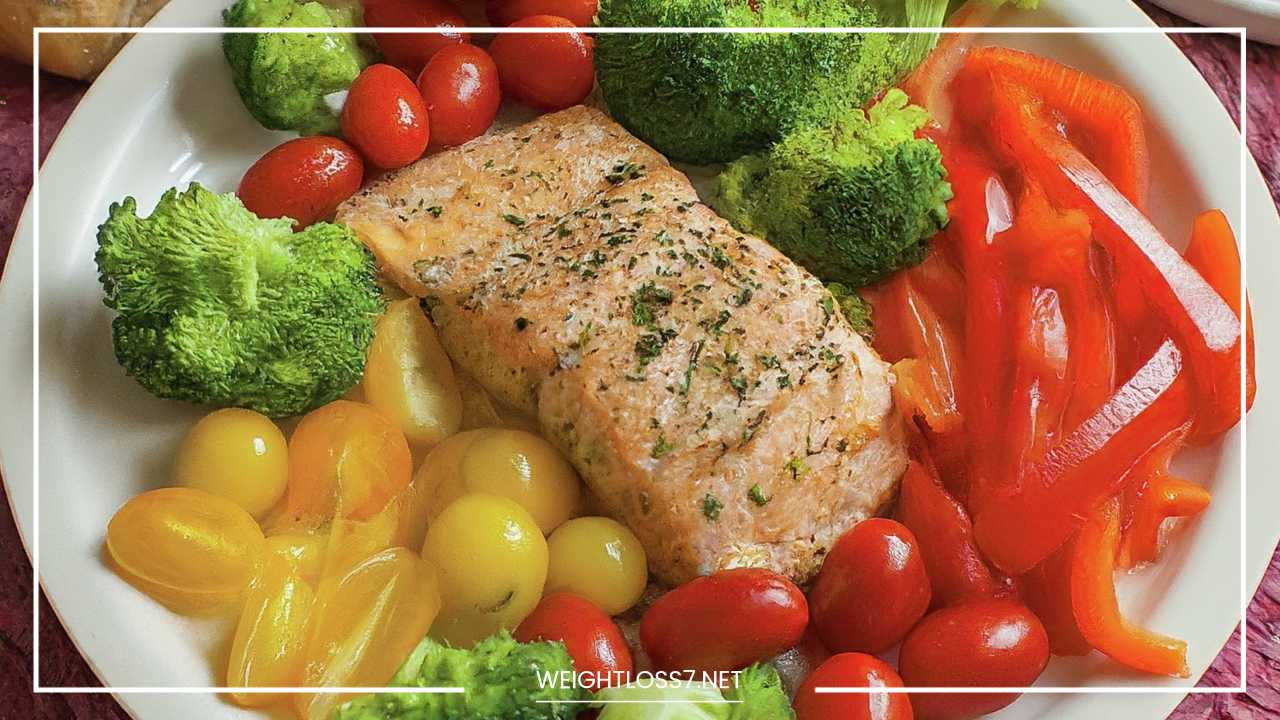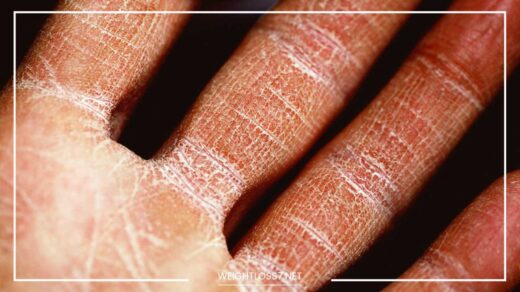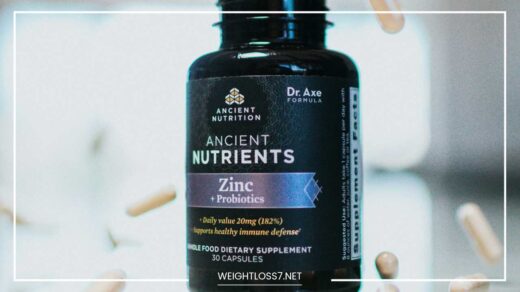Pritikin Diet: Low-Fat Lifestyle Guide

Pritikin Diet
The Pritikin Diet: A Comprehensive Exploration of a Low-Fat Lifestyle
In the ever-evolving landscape of weight loss trends, fads, and quick fixes, the Pritikin Diet stands out as a proponent of a simpler, more sustainable approach.
Developed by Nathan Pritikin in the 1970s, this dietary philosophy focuses on whole, unprocessed foods that are low in fat and high in fiber.
This blog post delves into the depths of the Pritikin Diet, exploring its core principles, potential benefits, and considerations before embarking on this low-fat journey.
We’ll also unpack the science behind the approach and address common concerns to help you make an informed decision about whether the Pritikin Diet aligns with your health goals.
The Pritikin Philosophy: Beyond Weight Loss, A Path to Overall Wellness
The Pritikin Diet transcends the mere objective of shedding pounds. It’s a comprehensive lifestyle change that emphasizes a plant-based approach to eating.
This philosophy centers on whole grains, fruits, vegetables, legumes (beans, lentils), and lean protein sources like fish and skinless chicken.
This dietary pattern is interwoven with regular exercise and stress management techniques, aiming to promote not just weight management, but overall health and well-being.
The Science Behind the Pritikin Approach
The core principles of the Pritikin Diet find support in established scientific research. Here’s a closer look at the science underpinning this low-fat philosophy:
- Fat and Weight Management: Studies consistently demonstrate the association between dietary fat intake and body weight. While not all fats are created equal, a reduction in overall fat intake, particularly saturated and trans fats, can contribute to a calorie deficit, promoting weight loss.
- Fiber and Satiety: Fiber-rich foods like fruits, vegetables, and whole grains promote satiety (feeling full) by slowing down digestion and keeping you feeling satisfied for longer. This can help curb cravings and overeating, facilitating weight management efforts.
- Low-Fat Diet and Heart Health: Saturated and trans fats are well-documented contributors to elevated LDL (“bad”) cholesterol levels, a known risk factor for heart disease. The Pritikin Diet’s emphasis on minimizing these fats aims to lower LDL cholesterol, potentially reducing the risk of heart disease.
- Glycemic Control and Blood Sugar: Whole grains and legumes have a lower glycemic index (GI) compared to refined carbohydrates. This means they cause a slower rise in blood sugar levels, which can be beneficial for individuals with prediabetes or type 2 diabetes.
The Pritikin Food Pyramid: A Practical Guide to Food Choices
The Pritikin Program categorizes foods into three distinct groups, offering a clear visual representation of dietary choices:
Go Foods (Eat Liberally):
Forming the base of the Pritikin pyramid, these are the cornerstones of a healthy Pritikin plate. They include:
- Fruits: A vibrant selection of fruits in all colors provides essential vitamins, minerals, and antioxidants.
- Vegetables: Non-starchy vegetables like leafy greens, broccoli, carrots, and bell peppers are packed with nutrients and low in calories.
- Whole Grains: Opt for whole-wheat bread, brown rice, quinoa, and oats for sustained energy and a good source of fiber.
- Legumes (Beans, Lentils): These powerhouses are rich in protein, fiber, and various essential nutrients.
- Low-Fat Dairy Products: Skim milk, low-fat yogurt, and fortified plant-based milks provide calcium and other essential nutrients.
- Lean Protein Sources: Skinless chicken, fish (especially fatty fish rich in omega-3s), and lean cuts of turkey are good options.
Caution Foods (Eat Sparingly):
These foods are not forbidden but require mindful portion control due to their higher calorie content. They include:
- Nuts and Seeds: While a good source of healthy fats, fiber, and protein, nuts and seeds are calorie-dense. Moderation is key.
- Avocados: This creamy fruit boasts healthy fats and fiber but is also higher in calories. Enjoy it in moderation.
- Higher-Fat Fish (Salmon): Fatty fish like salmon are excellent sources of omega-3 fatty acids, but portion control is recommended.
- Starchy Vegetables (Potatoes, Corn): These vegetables offer valuable nutrients but are higher in calories and carbohydrates. Consider portion sizes.
Stop Foods (Avoid):
The Pritikin Program discourages these foods due to their potential contribution to weight gain and chronic health issues. They include:
- Processed Foods: These are often loaded with saturated and trans fats, sodium, added sugars, and refined carbohydrates, offering minimal nutritional value. Examples include packaged snacks, instant noodles, frozen meals, sugary cereals, and processed meats like hot dogs, sausages, and deli meats.
- Sugary Drinks: These beverages are high in calories and devoid of essential nutrients. They contribute to weight gain, blood sugar spikes, and increased risk of chronic diseases. This category includes sodas, sweetened juices, sports drinks, energy drinks, and sugary coffee drinks.
- Red Meat: While red meat can be a source of protein and iron, it is also high in saturated fat and cholesterol. The Pritikin Program recommends limiting red meat intake or opting for lean cuts in moderation.
- Organ Meats: Organ meats like liver, kidney, and sweetbreads are high in cholesterol and saturated fat. The Pritikin Program discourages their consumption.
- Fried Foods: Fried foods are high in unhealthy fats, calories, and sodium. The Pritikin Program recommends opting for healthier cooking methods like grilling, baking, or steaming.
- Added Fats: While some healthy fats are encouraged in moderation (like those found in nuts, seeds, and avocados), the Pritikin Program discourages excessive added fats like butter, coconut oil, and palm oil, which are high in saturated fat.
- Refined Grains: Refined grains like white bread, pasta, and rice have been stripped of their bran and germ, reducing their fiber content. The Pritikin Program emphasizes whole grains for their higher fiber content and potential health benefits.
Potential Benefits of the Pritikin Diet: A Look Beyond Weight Loss
While weight management is a significant aspect of the Pritikin Diet, the potential benefits extend far beyond the numbers on the scale. Here’s a closer look at some of the potential advantages of adopting this low-fat lifestyle:
- Improved Heart Health: As mentioned earlier, the Pritikin Diet’s focus on minimizing saturated and trans fats can potentially lower LDL cholesterol levels. This, coupled with increased intake of fruits, vegetables, and whole grains (rich in fiber), can contribute to a healthier heart and reduced risk of heart disease.
- Blood Sugar Control: The emphasis on whole grains and legumes with a lower glycemic index (GI) helps regulate blood sugar levels. This can be particularly beneficial for individuals with prediabetes or type 2 diabetes, aiding in managing blood sugar fluctuations.
- Reduced Risk of Chronic Diseases: Research suggests that a low-fat, plant-based diet may contribute to a lower risk of certain cancers, particularly those linked to obesity. Additionally, the focus on whole foods and fiber intake might be associated with a lower risk of type 2 diabetes and certain digestive disorders.
- Improved Overall Well-being: The Pritikin lifestyle incorporates regular exercise and stress management techniques alongside dietary changes. This holistic approach can promote better sleep, increased energy levels, and a stronger immune system, contributing to overall well-being.
Considerations Before Embarking on the Pritikin Diet
The Pritikin Diet offers a structured approach to healthy eating, but it’s vital to consider some factors before diving in:
- Sustainability: The strict limitations on fat and certain food groups might pose challenges for some individuals in terms of long-term adherence. Consulting a registered dietitian can help create a personalized plan that ensures you meet your daily nutrient requirements while following the core principles of the Pritikin Diet.
- Social Aspects: Sticking to the Pritikin Diet in social settings like restaurants or gatherings can be tricky. Meal prepping and planning can help you navigate social situations without compromising your dietary choices. Consider bringing your own healthy dish to potlucks or gatherings, or researching restaurants with menu options that align with the Pritikin principles.
- Nutrient Adequacy: Very low-fat diets might pose challenges in meeting your daily fat intake needs, particularly essential fatty acids like omega-3s and omega-6s. Including healthy fats like those found in nuts, seeds, and avocados in moderation can help bridge this gap. Consulting a registered dietitian can ensure your Pritikin plan incorporates all essential nutrients for optimal health.
Addressing Common Concerns About the Pritikin Diet
- Is a low-fat diet boring? Not necessarily! The Pritikin Diet encourages a focus on a wide variety of fruits, vegetables, and whole grains. With creativity and exploration, you can discover delicious and satisfying meals that adhere to the program’s principles.
- Can I still enjoy eating out? With a little planning, you can certainly enjoy eating out while following the Pritikin Diet. Many restaurants offer menu options that align with the program’s focus on lean protein, vegetables, and whole grains. Research menus beforehand and choose options that fit your dietary needs.
- Is exercise mandatory? While not mandatory, exercise is a crucial aspect of the Pritikin lifestyle for overall health and weight management. Regular physical activity helps burn calories, build muscle, and improve cardiovascular health.
The Pritikin Lifestyle: Beyond Diet – Exercise and Stress Management
The Pritikin Program goes beyond just dietary changes; it emphasizes a holistic approach to well-being. Here’s a closer look at the other crucial pillars of the Pritikin lifestyle:
- Exercise: Regular physical activity is an essential component of the Pritikin Program. It recommends a combination of moderate-intensity aerobic exercise (like brisk walking, swimming, or cycling) for at least 30 minutes most days of the week, along with strength training exercises two to three times a week. Exercise helps burn calories, build muscle mass, improve cardiovascular health, and boost energy levels.
- Stress Management: Chronic stress can negatively impact your health and hinder weight management efforts. The Pritikin Program incorporates stress management techniques like relaxation exercises (deep breathing, meditation) and yoga to help you manage stress levels, promoting better sleep, improved mood, and overall well-being.
Sample Pritikin Meal Plan: A Glimpse into a Day of Eating
This sample meal plan provides a basic structure to showcase how you can incorporate a variety of foods following the Pritikin principles:
- Breakfast: Oatmeal with berries and a sprinkle of nuts or seeds, unsweetened almond milk
- Mid-Morning Snack: Apple slices with a dollop of natural peanut butter
- Lunch: Grilled salmon with a side salad (mixed greens, cucumber, tomato) with a light vinaigrette dressing, brown rice
- Afternoon Snack: Carrot sticks and hummus
- Dinner: Lentil soup, whole-wheat pasta with a simple tomato sauce and steamed vegetables
- Evening Snack: Small pear or a handful of mixed berries
Tips for Success on the Pritikin Diet:
- Start Slowly: Don’t try to overhaul your entire diet overnight. Introduce Pritikin principles gradually, making small, sustainable changes each week.
- Plan and Prepare: Meal prepping and planning your snacks can help you stay on track, especially when you’re busy. Having healthy options readily available can prevent resorting to unhealthy choices.
- Stock Your Kitchen: Fill your pantry with Pritikin-friendly staples like whole grains, legumes, nuts, seeds, and canned vegetables. This makes healthy meal preparation easier.
- Find a Support System: Let your friends and family know about your dietary changes. Surround yourself with supportive people who encourage your healthy choices.
- Consult a Registered Dietitian: A registered dietitian can personalize the Pritikin approach to fit your specific needs and preferences, ensuring you meet your nutrient requirements while following the core principles.
Final Word: Making an Informed Decision About the Pritikin Diet
The Pritikin Diet offers a well-structured approach to healthy eating with the potential for weight management and improved overall health.
By emphasizing a plant-based diet, regular exercise, and stress management, this program promotes a holistic approach to well-being.
However, it’s important to remember that there’s no “one-size-fits-all” solution when it comes to weight loss and healthy eating.
Consider your individual preferences, lifestyle, and any underlying health conditions before embarking on a new dietary plan.
Consulting a healthcare professional or registered dietitian can help you determine if the Pritikin Diet aligns with your health goals and guide you in making informed decisions for a sustainable and healthy lifestyle.
Additional Resources:
- Pritikin Center: https://www.pritikin.com/
- Academy of Nutrition and Dietetics: https://www.eatright.org/
- National Institutes of Health: https://www.nih.gov/
Remember, consistency is key! By incorporating the core principles of the Pritikin Diet into your daily routine and making sustainable changes, you can embark on a path towards a healthier and happier you.

















